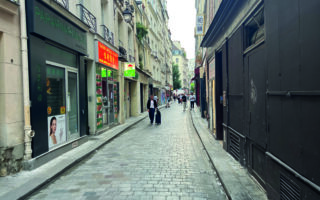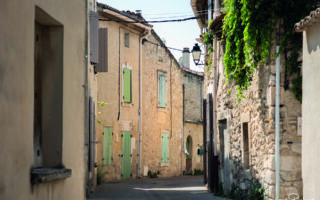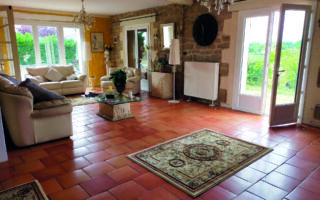Restoration of a Manor House in France
Community
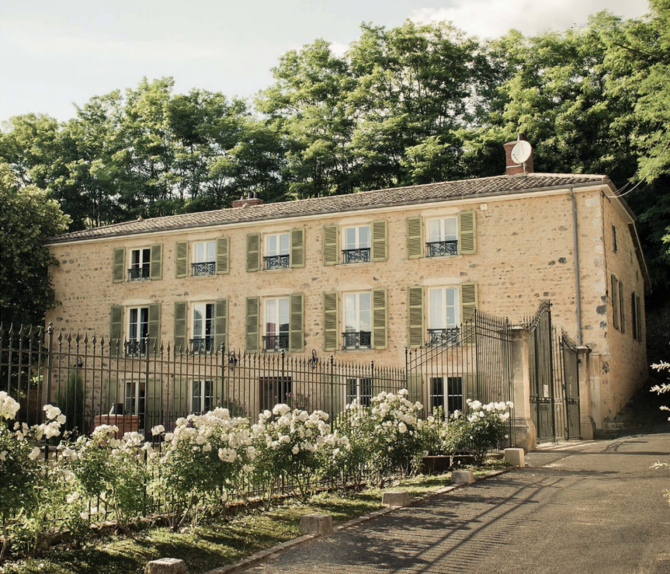
LOVE AT FIRST SIGHT
Justin Postlethwaite talks to the passionate owner of a 18th-century domaine in Beaujolais, north of Lyon, about its complete restoration …
French-born Richard Brague bought the abandoned Domaine de Vavril in 2004 and, since then, has worked tirelessly to restore the 18th-century Manor House and its vineyards to their former glory, in order to provide a haven for “family spirit, vines and wines, gastronomy and Beaujolais’ traditions”.
FrenchEntrée Magazine : What drew you to the area? Tell us about Beaujolais…
Richard Brague : Three things drew me to the area: beauty, authenticity and location – it’s easy to get to, by train, car or plane.
Beaujolais is known as the ‘French Tuscany’. The weather is pleasant and the landscape fantastic – majestic hills, covered in vineyards.
When living abroad, your roots become even more important to you. You want your children to be aware of their orifins and Beaujolais is perfect. It isn’t a ‘museum’, an area that’s totally dependent upon tourism – so crowded in the summer and dead the rest of the year. It’s peaceful but enjoys the ecosystem of Lyon and its surroundings, so there’s a real economy and many traditions.
I worked in finance for many years and travelled a lot for my job. it was a peculiar life that needed to be balanced with other fundamental ideals – namely family values. Finding a place where I could bring my family together was the driving force – I was looking for an authentic place to start a family project.
FE: Is this your first French property/business?
RB: Yes, for me, Le domaine de Vavril was ‘coupe de foudre’ (love at first sight). In 2004, I relocated to London with my family and, at the same time, bought Le Domaine de Vavril, which had been abandoned by its owners and unoccupied for more than 15 years. It was in a pitiful condition, a shell of its former self. In less than 24 hours, I made up my mind to buy it, without even consulting my wife!
FE: Tell us a little about Vavril…
RB: The property is steeped in history. However, difficult periods in France have led to the loss of documents – many national archives in Paris were burned during the Paris Commune days, making it difficult to do any research before 1871. So it’s impossible to accurately trace the history of the Domaine. However, fortunately, some of its architectural elements have provided us with valuable information.
The Domaine’s history seems to start during the Middle Ages, judging by the presence of such typical architectural elements as the cross of Saint Andrew in the reception room and the thick walls.
In the 18th century, lords lived under ostentatious luxury codes imposed by the Royal Court. To solve their financial problems they sold part of their lands. Some even sold or farmed out their manorial rights. By doing this, they amputated their future income and worsened their situations. The Manor House’s architectural features are typical of the 18th century – its style and symmetry, central staircase, living rooms on the ground floor and rooms with double doors for the landlords, with high ceilings and exquisite fireplaces. The attic was reserved for servants.
In the mid-19th-century, it seems that Le Domaine de Vavril belonged to a Russian Baron, which isn’t surprising as Imperial Russia was a key strategic partner for France. However, few 19th-century architectural elements are present – houses built then had thinner walls and used stucco and plaster.
Just before World War 1, the Domaine was acquired by a family from Lyon whose son left to pursue a career in medicine in the colonies. There are few traces left from this period, although the tiles on the ground floor are typical of the early 20th century.
After World War 2, a local family took up the Domaine – it was used purely for winemaking and not much care was given to the Manor House and the other buildings. When the owner retired, only the vines continued to be looked after.
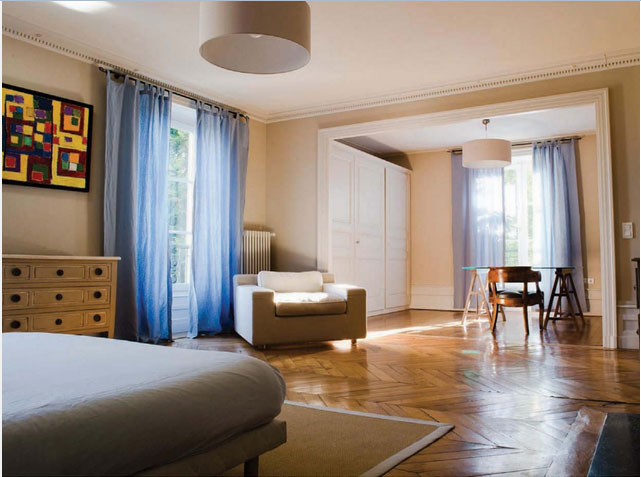
FE: What were your main challenges when you bought Vavril?
RB: Renovations and finding a business model to maintain the Domaine – one which also allowed us to enjoy it as a family home.
Above all, Le Domaine de Vavril is a wine estate. Therefore the first decision I took was to hire a young vigneron, Jean-Luc Ducruix, and to invest properly in the production of quality wine. Our wines gained many accolades very quickly, at both national and international level. I export a majority of what we make to Japan.
Unfortunately, the winemaking activity alone was not profitable enough to maintain a Domaine of this size.
I had to get back to reality and decided to forget the emotional attachment I had to the Domaine and turn it into a small business.
I started to rent out the Manor House and in 2009 it received five stars from the Gîtes de France. I then decided to refurbish the barn as a ballroom for weddings and receptions. We proposed an original concept: a ‘full privatization’ of the Domaine, so that guests can share the dream, living here as if it was their own family home and vineyard.
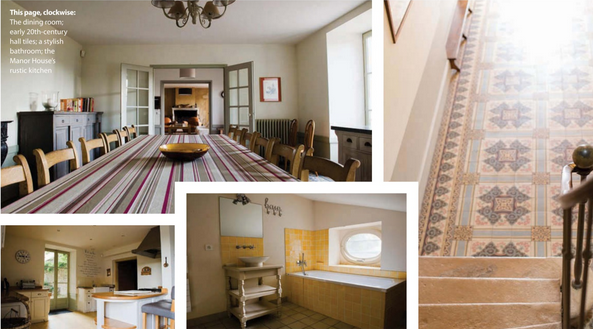
“You need to fall in love with a place. Do it with passion. It may end up being a good investment opportunity but it should be more than that”
FE: How did you approach the renovations?
RB: I worked hard to source a local workforce that could help. We had 17 professionals working over two years to entirely renovate the property, with a project manager to oversee and coordinate everything.
We didn’t want to cut corners, as I’m convinced that quality craftsmanship and materials last longer. Quality craftsmanship also ages better – it develops a nice patina.
We chose to use local craftsmen who had experience in renovation work, as well as with listed buildings. This was crucial as you need professionals who understand the style of the region and what original materials to use, in order to retain the authenticity of the place.
People always underestimate how important it is to have good relations with local workmen who are actually near the property, in case of any problems. For example, if you’ve a plumbing problem when there are guests on site or I’m on holidays with friends and family, using trusted local professionals will ensure that they’re fixed quickly and efficiently.
FE: Who did the planning and design?
RB: I did. The French touch I guess (joke)
FE: What was your inspiration for the look and feel of the interiors?
RB: Like everybody, I guess we started with interiors, life style and decoration magazines – then we chose our own path. Once we’d agreed on a style or an ‘atmosphere’ for the house, we choose what furniture, paintings and objects we already had that could fit in and how to tell our ‘family story’.
FE: What experience did you have with renovation and remodelling interiors?
RB: None. But then renovation isn’t ‘rocket science’. You need to trust your taste and have confidence in local crafsmen. We were travelling from London almost every weekend. My father was on site. We were exchanging photos and videos, and we had regular calls with our project manager and craftsmen.
FE: Where did you source the furniture, paints and other objects?
RB: Everywhere is the best answer! Most of the furniture, paintings and other objects have a story. The paintings were either given to us or created by my father-in-law. As I travelled a lot, some furniture and objects came from abroad. They remind me of where I travelled for work, of holidays or where I’ve lived. Some others came from our parents or grandparents.
They’re all different, which perfectly reflects our taste and life – that’s what makes our customers feel like they’re at home when they come to stay.
After ten years, I asked an old friend of mine, Agathe Convert, who’s an interior decorator, to provide some new ideas that were in line with our style. We were in high school together, so she knows me quite well – it helps, I guess. With such a project, you come to realise that many people can help you. You need to stay open minded, as such a project is really a living project that should tell a story. I didn’t want a museum…
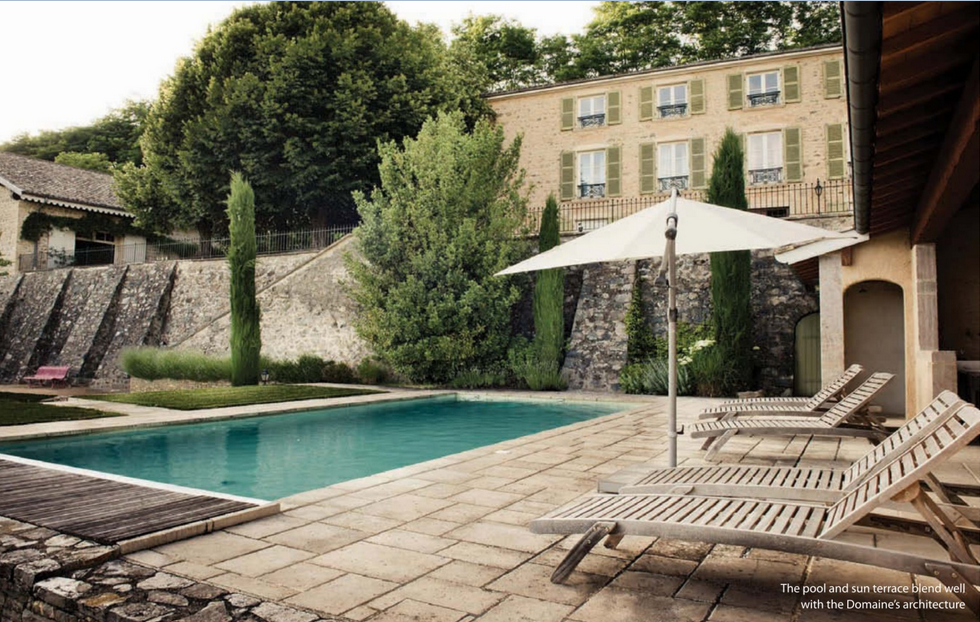
“You need professionals who understand the style of the region and what original materials to use, in order to retain the authenticity of the place”
FE: Tell us about the garden – what were your design inspirations?
RB: It’s a mix of French and English garden styles but with the spirit of the 18th century, to preserve the harmony of the area. Maybe the garden is a mix because I was living in London when I refurbished the house.
We wanted something pleasant and relaxing, notably around the swimming pool. There are nice perspectives between the garden and the Manor House, which I tried to keep during the refurbishment. The Manor was built in the 18th century and the perspectives are characteristic of the period so we wanted to keep them, to preserve the harmony of the place.
FE: What advice would you give to anyone who’s thinking of buying French property and relocating?
RB: You need to fall in love with a place. Do it with passion. If you think of it as a financial investment, you’re wrong. It may end up being a good investment opportunity but it should be more than that. Also don’t try to do everything on your own. Make sure that you use skilled teams and ask for help. You won’t save yourself money in the long run if you cut corners.
Use local craftsmen, as you’ll always need them. It may be more expensive initially but you’ll soon realise that it was a good idea. In summary, do it with passion and don’t think about money, then you will find a way to realise your dream.
FE: Can you tell us a little about your accommodation at Vavril?
RB: It’s a ‘home away from home’ for our guests. We welcome groups to stay in the Manor House, for periods from three days to a week. We also organise original and authentic weddings and receptions. We organise everything and offer a complete wedding planning service, to personalise their event and make it unique.
With five double bedrooms and four children’s bedrooms, we can accommodate 22 people in the main Manor House and up to 16 in two of the ‘grape picker’ dormitories. We also supply a suggestion list of six personal chefs and caterers for events.
However, we go above and beyond providing just accommodation plus a catering service. We also have a planning service on site, to help organise many events, from the original event conception to the coordination of elements all along the way, including the fixing of the decorations and picking-up guests at the airport.
We can also advise and take care of the whole organisation of the event for our guests, if they so require – so that they can focus on enjoying the celebrations without the headache of organising it. In other words, we can offer a full, tailor-made package for a unique event.
We organise around 30 weddings or receptions every year, and as a result have sourced first-class service providers in the region, ones who fit with our client’s needs and also know Vavril well.
If I was getting married, I’d feel more comfortable having a local wedding planner who’s used to dealing with the service providers in the region and who know the place, to avoid any unwelcome surprises. That’s why I choose to offer this complete service to our guests – it’s the personal touch.
FE: Apart from yourself, who runs Vavril?
RB: We’re a small team of four people. As the owner, I’m in charge of strategy and finance.
Jean-Luc Ducruix is the winemaker and cellar master of Le Domaine de Vavril. Bernard Brague, may father, lives on-site and takes care of the daily activities, the logistics and the refurbishment works.
Maud Lafarge is in charge of marketing and development. Her Burgundian origins and her family’s entrepreneurial culture motivated her to join the Vavril team and lead the development of new activities around wedding planning and events, so that our guests can have a perfect French-style wedding or a genuine custom-made event.
We subcontract all other work, such as cleaning, gardening, catering. That way it’s much easier for us to adapt to customers’ needs and provide totally custom services.
For more information, visit www.vavril.fr
If you are considering buying a renovation project in France you will find more articles of interest in our Renovation Zone
Buying a property to renovate in France >>>
Share to: Facebook Twitter LinkedIn Email
Leave a reply
Your email address will not be published. Required fields are marked *

